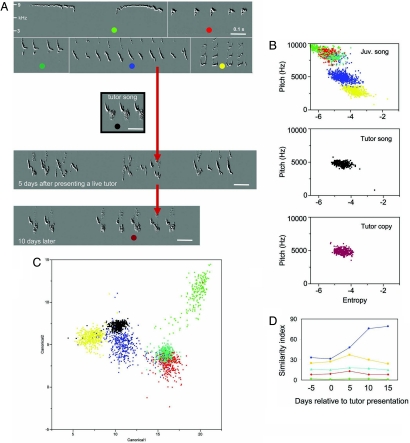Fig. 6.
Prompt song acquisition in the spring. (A) A young male (251 days old) produced several precursor song types, each with repetitive syntax, before it was presented with a live tutor. A recognizable approximation of the tutor song type was already in place 5 days after onset of tutoring, mixed in with renderings of the juvenile precursor song that most closely resembled it; by day 10 the match was very close. (B) The acoustic space occupied by the tutor and juvenile song type, identified by color. Notice that the tutor song (black) matched closely the acoustic space of one of the juvenile precursor songs (blue). (C) Discriminant function analysis reveals the relative acoustic distance between model song (in black) and the multiple precursor song types. (D) The similarity index between precursor songs and model song over days before and after presentation of the adult model. One of the precursor songs (in blue) was immediately modified and approximated the model song after the introduction of the adult model. Other precursor song types remain mostly unchanged, although one of them (in yellow) temporarily approached the model song.

